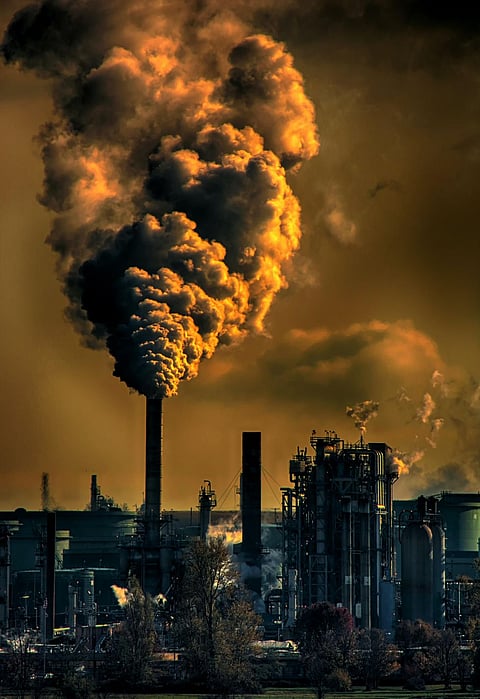
- Home
- न्यूजग्राम
- NewsGram USA
- India
- World
- Politics
- Entertainment
- Culture
- Lifestyle
- Economy
- Sports
- Sp. Coverage
- Misc.
- NewsGram Exclusive
- Jobs / Internships

Black carbon could lead to premature mortality, said a study conducted by the Department of Science & Technology-Mahamana Centre of Excellence in Climate Change Research (MCECCR) at the Banaras Hindu University.
Black carbon has significant adverse effects on human health and leads to premature mortality, said the new study, which could help in the estimation of the future burden of mortality associated with air pollutants more accurately.
The study explored the individual as well as the cumulative impact of BC aerosol, fine (PM 2.5) and coarse (PM 10) particulates, and trace gases (SO2, NO2, O3) on premature mortality in Varanasi. The findings have recently been published in the journal 'Atmospheric Environment'.
The Indo-Gangetic plain is exposed to black carbon with serious implications on regional climate and human health. However, most of the pollution-based epidemiological studies essentially relate exposure to particulate mass concentration (PM 10 and/-or PM 2.5) that invariably generalize all particulates with equal toxicity without distinguishing individuals by their source and composition, which genuinely have different health consequences.
Importantly, the health effects in terms of mortality due to black carbon aerosol exposure have never been evaluated in India. A typical urban pollution hotspot in the central Indo-Gangetic plain (IGP), Varanasi experiences very high aerosol loading and trace gas concentration throughout the year due to the prevalence of a subsidence zone and observed decadal increasing trends both in aerosol optical depth and black carbon aerosols.
The scientists from the MCECCR, supported by the climate change program of the Department of Science and Technology, utilized daily all-cause mortality and ambient air quality from 2009 to 2016 to clearly establish a significant impact of black carbon aerosols, NO2, and PM2.5 exposure on mortality.
ALSO READ: Indian Railways to Go Carbon-Free by 2030
The inclusion of co-pollutants (NO2 and PM 2.5) in the multi-pollutant model increased the individual mortality risks for black carbon aerosols. The effect of pollutants was more prominent on males in the 5-44 age group, especially during winter.
They found that the adverse effect of air pollutants is not limited to the current day of exposure, but can extend as high as up to five days. They further showed that mortality rises linearly with an increase in air pollutant levels and shows adverse impact at higher levels.
The inclusion of black carbon as a potential health hazard inspires and provides a background for more epidemiological studies to provide evidence of the health effects of air pollutants from different parts of the country. R.K. Mall led the team of scientists who conducted the study, including Nidhi Singh, Alaa Mhawish, Tirthankar Banerjee, Santu Ghosh, and R.S. Singh from the BHU. (IANS/KB)
